Last-Minute NYC Holiday Gift Guide 🎁
We’ve created a holiday gift guide with presents for the intrepid New Yorker that should arrive just in time—


In Flatbush, Brooklyn, a notable and landmarked Sears, Roebuck store stands tall in the parking lot behind the Kings Theatre. The Art Deco building stands as a reminder of the bustling commercial district that activated this neighborhood in the earlier part of the 20th century. This retail flagship was so important, Eleanor Roosevelt delivered the opening remarks in November of 1932 and she is said to have made the first purchase ever in this location, “a pair of baby booties,” reported the Brooklyn Eagle. This building is also the only Sears retail stores opened by the company in the 1930s that is still in operation. [Editor’s note: Since this article was published in 2016, it was announced in September 2021 that the Sears, Roebuck store in Flatbush would be closing, shut down by Transformco, a company that owns Sears’ assets as part of its Chapter 11 Bankruptcy, as reported by The City]
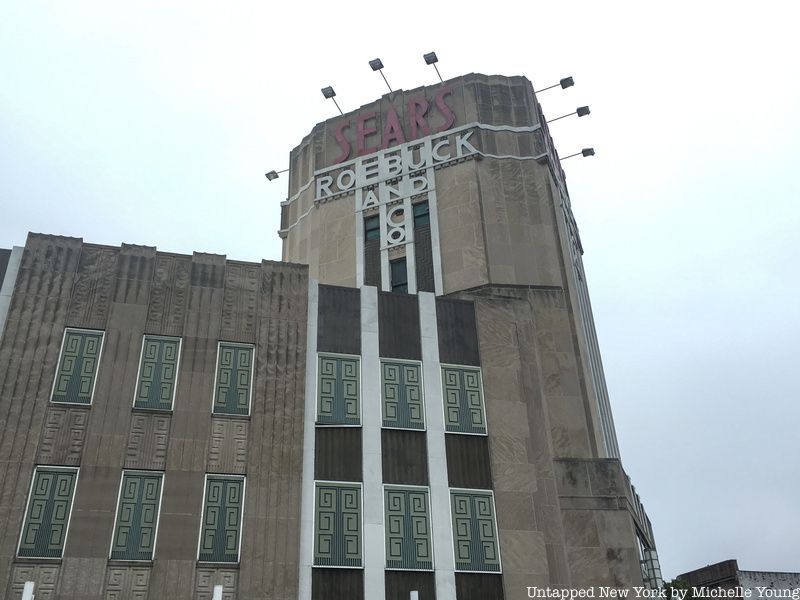
The high tower on the corner of Bedford Avenue and Beverly Road was an architectural characteristic applied to all of the Sears retail outlets at this time, “to distinguish each branch from more utilitarian structures,” the Landmarks Preservation Commission describes. It contains the original signage “SEARS ROEBUCK AND CO.” Department store branches such as this one were key to Sears’ new strategy in a company that had been founded as a mail order business. The firm hired the firm of Nimmons, Carr & Wright, based in Chicago, to design many of the Sears retail outlets.
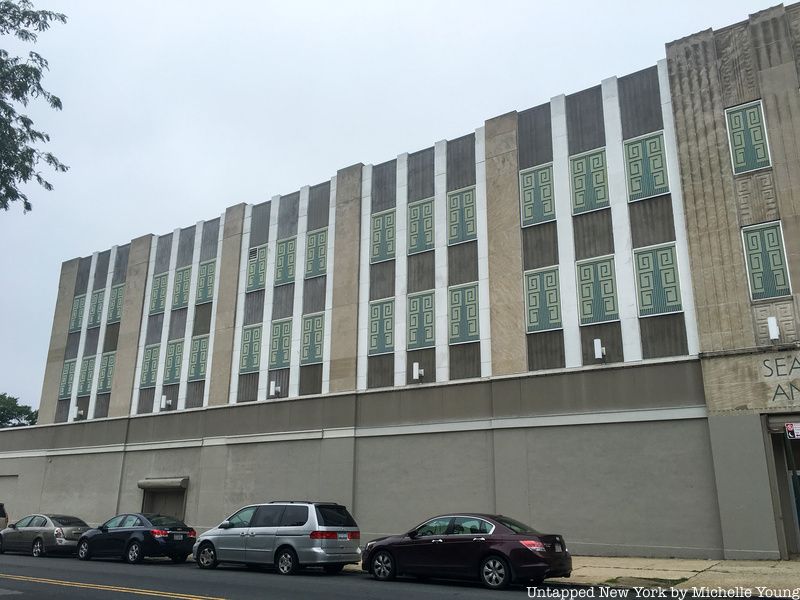
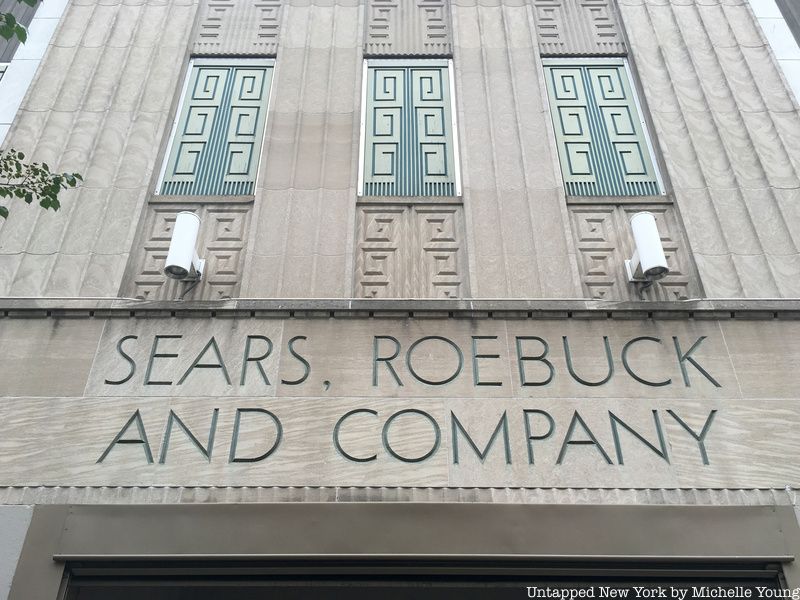
As this article explains, the “windowless” style of the Sears department stores after this one in Brooklyn was actually inspired by the the Century of Progress International Exposition in Chicago in 1934. The windowless design provided far more display space for the stores than before. The covering over of the windows with plastic panels at the Flatbush Sears store have brought the design of the store in line with the rest of the chain, whether inadvertently or purposefully.

The most notable features, besides the tower, are the entrance bays of the shop, one each on Bedford and Beverly. There were once display windows lining each bay of the building which have since been filled in, unfortunately. The entrance bay was recessed slightly, “to protect customers from inclement weather,” writes the Landmarks Preservation Commission. Above the doors remain the company name, carved into the building. Above this are decorative relief panels that extend to the top of the three floor wing.
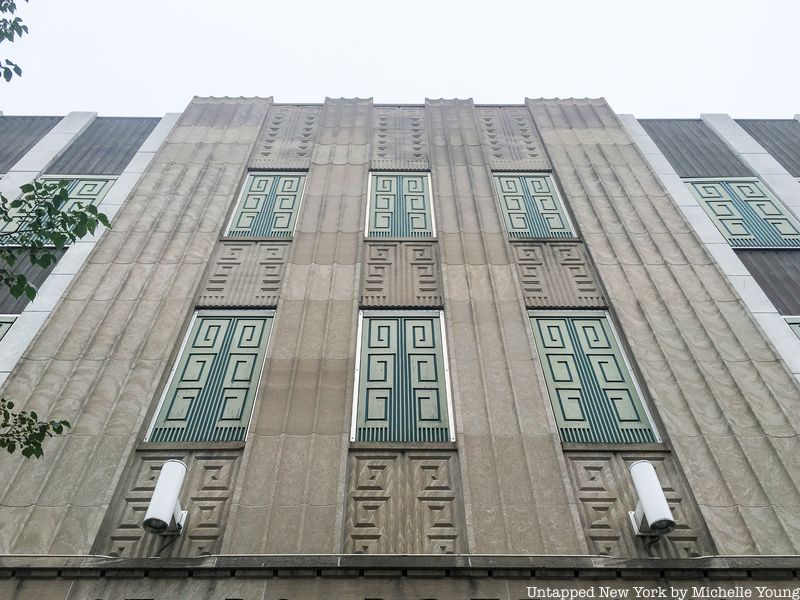
One of the more morose bits of history is the pipe bomb that went off inside the store in 1970, supposedly hidden in a purse on a sales counter. One of Untapped New York’s readers, Bobby Tanzillo, was there when the bomb went off. He says, “I was there once as a kid when a pipe bomb blew up. I was 3 so I don’t really remember but my mom does.” There were just two minor injuries from the incident.
The main entrance today is through the parking lot in the rear, where extensions were constructed, so the original entrances and facades are rather overlooked. Paint covers over part of the original metal plaques that denote the company name, but much of the structure of the store remains intact.
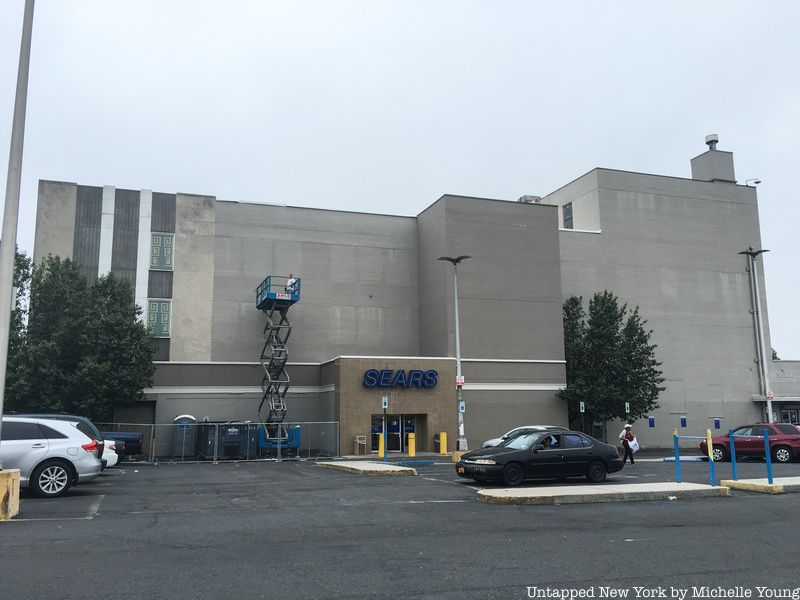

In 2020, the parking lot of this Sears store was repurposed into a drive-through coronavirus testing facility. Surrounded by nondescript, utilitarian structures and businesses, like Stop & Shop, Staples, and more, the Sears store continues to remain a visual landmark in this neighborhood, as its architecture was designed to do. With the recent news, it may be natural residents to worry about what the building’s future is. Its New York City landmark status will protect it from demolition and preserve the facade, as it evolves in the years to come.Simeon Bankoff, Executive Director of Historic Districts Council, tells us, “Landmarks Preservation Commission (LPC) can actually prosecute for demolition by neglect if a designated landmark falls into serious disrepair. LPC allows all kinds of icky alterations but you have to get a permit. I worry the Sears building will go the way of Long Island City clocktower with MEGA development behind/around it but the building itself is safe.”
Next, check out the Top 10 Secrets of Bloomingdale’s and the nearby Kings Theatre.
Subscribe to our newsletter